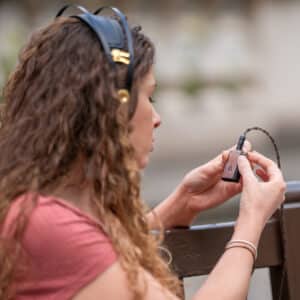Audio is stored in digits (0 and 1) formats in every digital device, including music players, televisions, CD players, and gaming consoles. Because human ears are incapable of comprehending this language as digits are solely intended for machines, the digital signal must be translated to analog before we can enjoy the sound. As a result, a digital-to-analog converter (DAC) is in charge of converting digital signals into audio. DACs are now built into computers, tablets, smartphones, LED televisions, and Blu-ray players. Obtaining the Best Portable DACs can make a significant difference in the way you listen to music.
That’s because all of the music on your phone is stored digitally, but it needs to be analog for your ears to understand it. That means there will be a massive amount of digital data to convert.
What we will see here?
1. The IFI Hip- DACs

The IFI Hip DAC is a portable headphone amplifier with improved music and a small size that can be easily carried while traveling. Its small size allows it to easily replace a subpar DAC and amplifier in your smart device, PC, or Mac.
The IFI Hip-DAC is an excellent choice. It’ll make the best headphones sound even better, thanks to its ‘bit-perfect’ digital-to-analog conversion and handy bass-boosting button, thanks to a plethora of connectivity options and numerous codecs supported.
The IFI Hip-DAC, which costs $149 / £149 / AU£249, isn’t outrageously priced for the specifications it provides, and it also looks great. Its luxurious petrol-blue and copper finish, as well as its – hey! – hip-flask design, make it the best portable DAC you’ll want to show off.
2. Chord Mojo 2
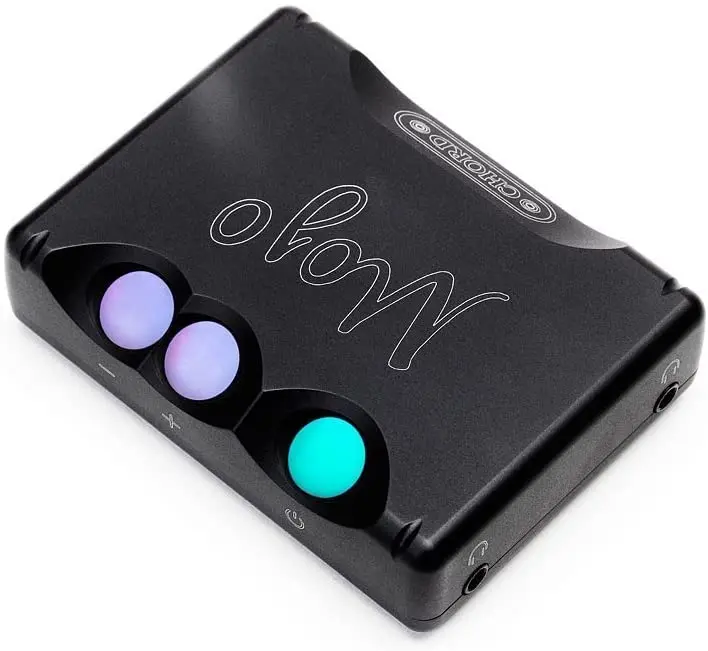
For a long time, the original Chord Mojo DAC was at the top of our list, but it has since been surpassed by the Chord Mojo DAC 2.
Replacing a borderline iconic product can’t be easy, which may explain why Chord Electronics took seven years to replace its original Mojo DAC / headphone amp.
It’s very simple to use. Simply connect a digital source to one end of Mojo 2 and wired headphones to the other.
This is a brilliantly accomplished device, capable of delivering all of the musicality, detail, refinement, and excitement hid in what previously sounded quite humdrum digital audio files. In terms of pure performance, the Chord Mojo 2 is almost a steal.
However, there are a few drawbacks. The Mojo 2 is big and heavy (it’s the same size and weight as the original it’s replacing), and it doesn’t have many features.
3. M-DAC Nano by Audio lab
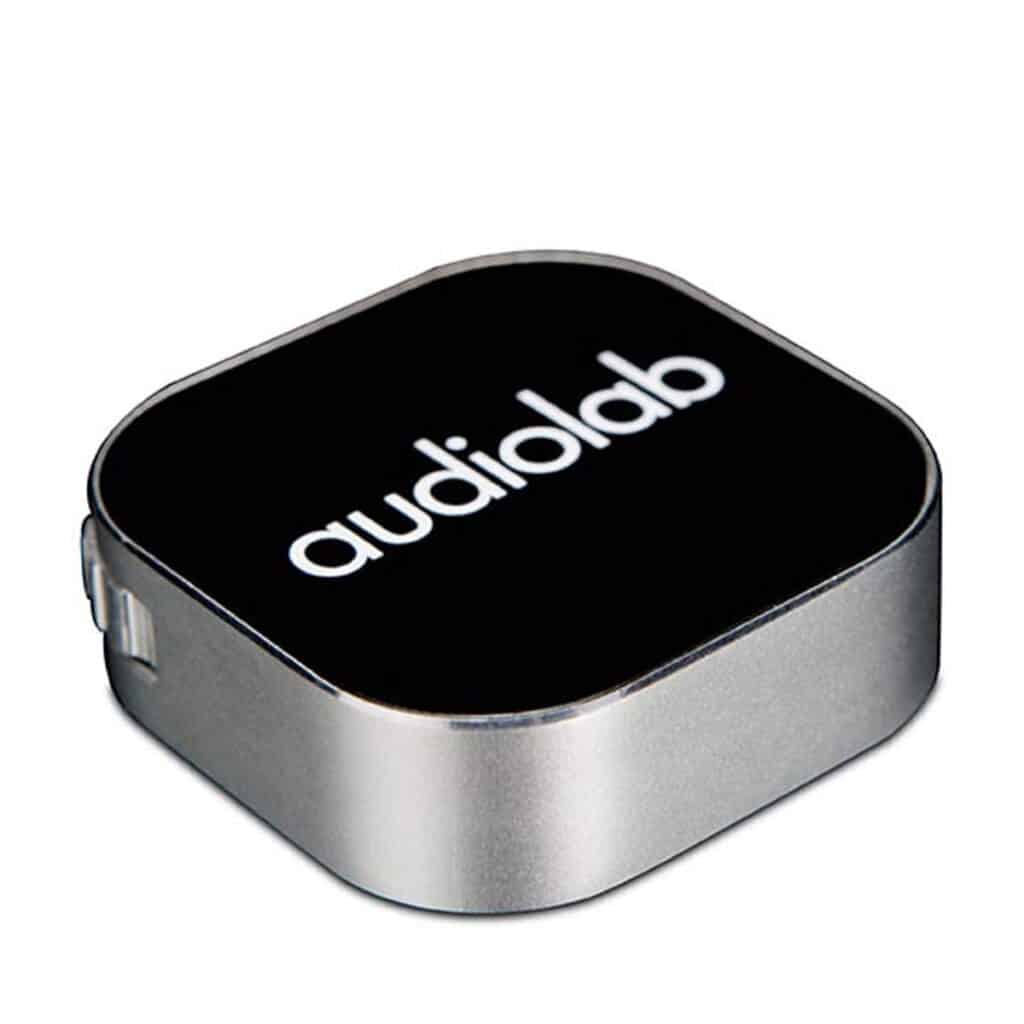
A portable headphone DAC and amplifier at an affordable price will improve the audio performance of any Bluetooth-enabled device. It’s about as simple as a gadget like this can get: connect the Audio lab wirelessly to your smartphone or MP3 player, plug in a pair of wired headphones, and you’re ready to go.
With the M-DAC nano’s dedicated volume wheel, your headphones effectively have a wireless connection to your phone. The unit’s ‘F’ button enables 32bit/384kHz upscaling, which adds critical clarity and depth to the sound of your source.
Under normal conditions, you’ll get eight hours of playback and a still-respectable six hours with upsampling enabled, and the Audio lab will drive headphones as demanding as 3000ohms with 7.5mw of power. It supports Bluetooth 4.2 (including aptX, aptX Low Latency, and AAC codecs), which is more than enough to get more performance out of a portable player.
The headphone jack is becoming extinct. Smartphone headphone amplification is improving at a rate that can only be described as ‘glacial.’ As a result, the M-DAC nano makes a lot of sense.
4. Astell & Kern AK USB-C Dual DACs
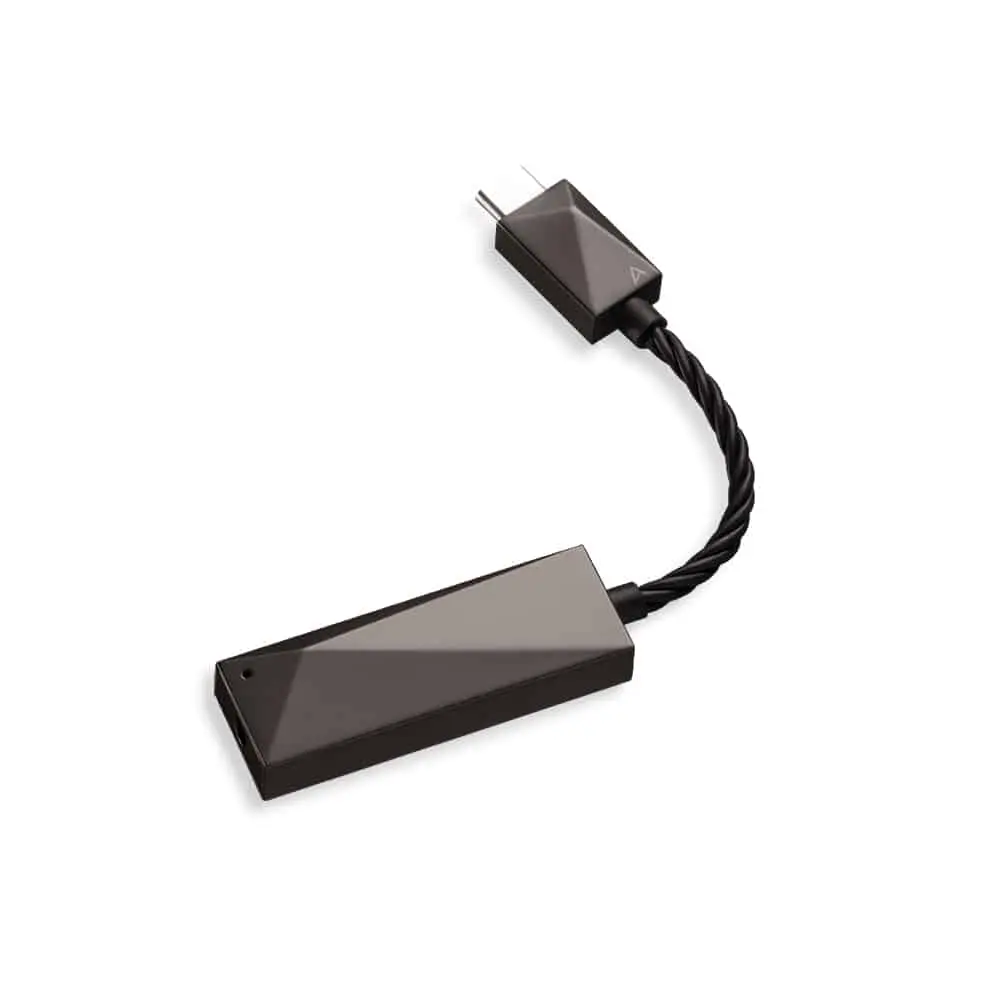
As one of the most well-known names in portable music players, Astell & Kern has already demonstrated how well it knows its way around a DAC. And, in terms of its first stand-alone, off-board DAC, the company has (relatively) hit the ball out of the park.
The USB-C Dual DAC consists of two small blocks (a USB-C plug and a DAC) connected by a flexible, braided cable. When compared to the other DACs here (including the Ear Men Sparrow), it’s tiny and weighs around 25g. However, A&K has made room for two DAC chipsets capable of handling audio files with a resolution of up to 32bit / 385kHz, as well as headphone amplification.
Connect your phone to your headphones with the A&K and prepare to be wowed. Your music gains attack and control, as well as far greater detail levels… heck, it’s even louder all around.
While it’s not a wireless solution like an Audio lab, the USB-C connector means you can use it with smartphones that don’t have a headphone jack. Of course, not Apple – but Apple has always been determined to make things difficult.
5. Dragonfly Red/Black Audio Quest DAC
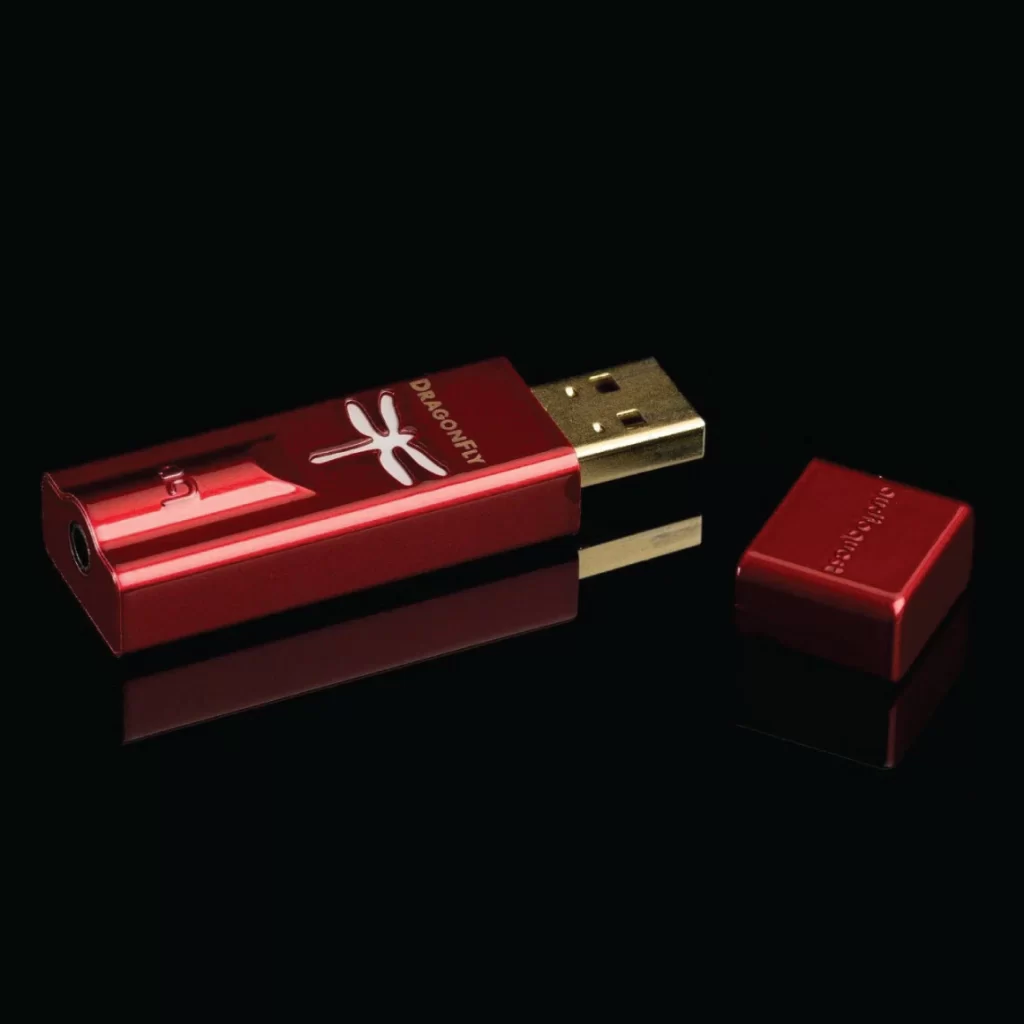
With the original Dragonfly back in 2012, Audio quest essentially invented the USB DAC, but the device’s power demands limited it to desktop use until now.
However, Dragonfly’s latest devices have completely changed that. Using an all-new USB microcontroller, Audio quest’s Dragonfly Red/Black DACs now consume closer to 25mA and can be used with any iOS device – though, an Apple Lightning to USB 3 Camera Adapter is required.
As a result, the Dragonfly is a very appealing iPhone DAC. The Dragonfly, with a total size smaller than most USB sticks, fits easily into a pocket alongside an iPhone.
Dragonfly Red is the more expensive option. It has a better DAC chip and produces 2.1 volts of power versus the Black’s 1.2 volts. As a result, the Red is a better option for driving high-impedance headphones.
6. DETHONRAY Honey H1 USB DAC Headphone Amplifier
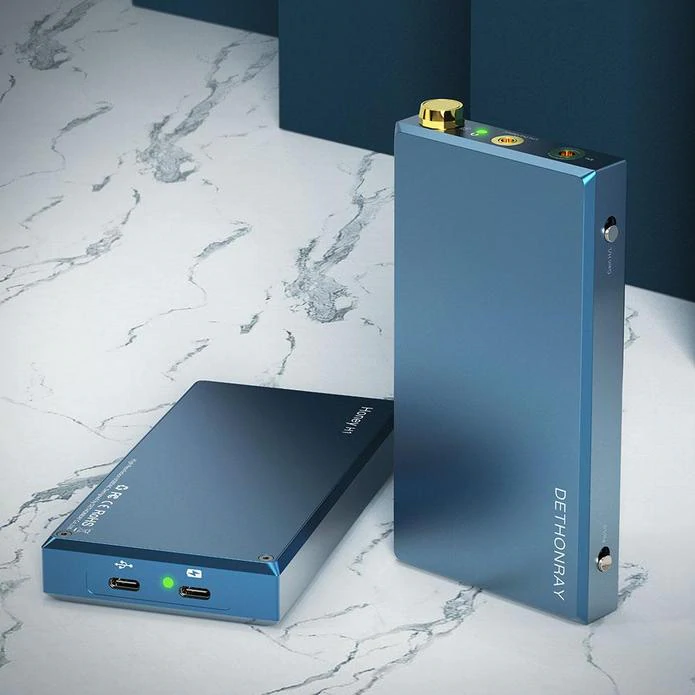
The Honey H1 made a big sensation in the enthusiast audio market when it was released in 2022. It’s undeniably one of the best-sounding DACs in recent memory; with so much power, it can even take the place of your desktop amplifier.
It’s an exceptionally well-designed piece of hardware, both internally and externally, that’s made to the greatest standards.
It supports practically all file types, including 16Bit/44.1K – 32Bit/384K DSD64 / DSD128. The Mojo’s output power is enormous, and it can easily drive even the most demanding headphones. The battery lasts about 10 hours on a regular basis and 8 hours on a balanced basis, and it only takes 4 hours to fully charge.
Conclusion
If you’re an audiophile, you know that the equipment is just as important as the music. For some people, equipment may even take precedence. The first step for most people is to purchase a good pair of headphones.
If you use a good pair of headphones, you will be fully engaged. After that, you’ll never want to wear regular headphones again. The majority of these headphones outperform the most popular options on the market.



